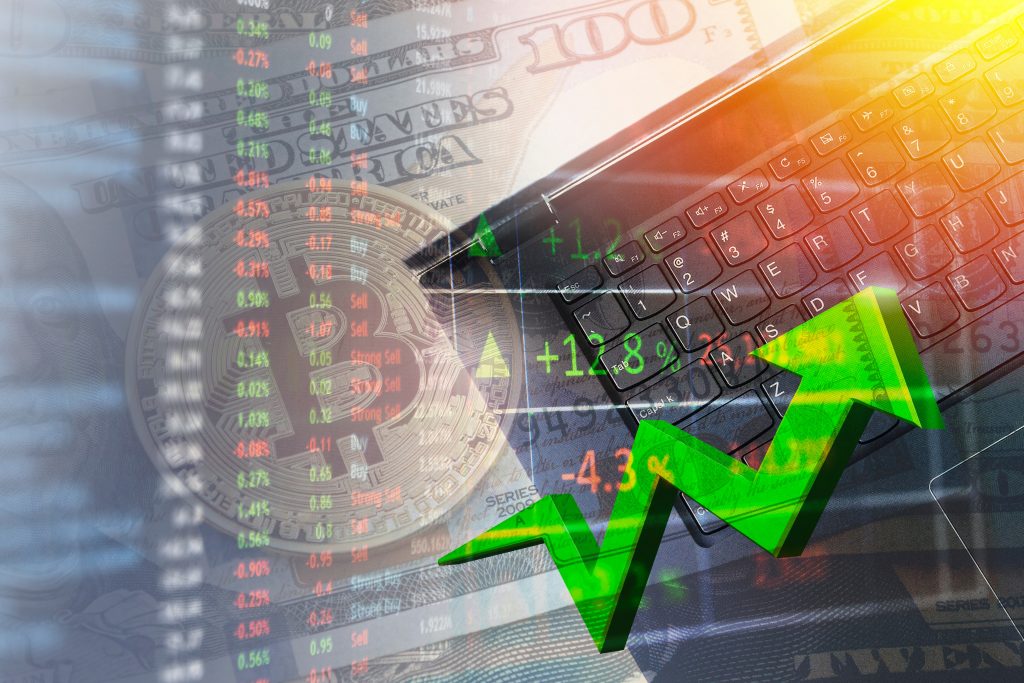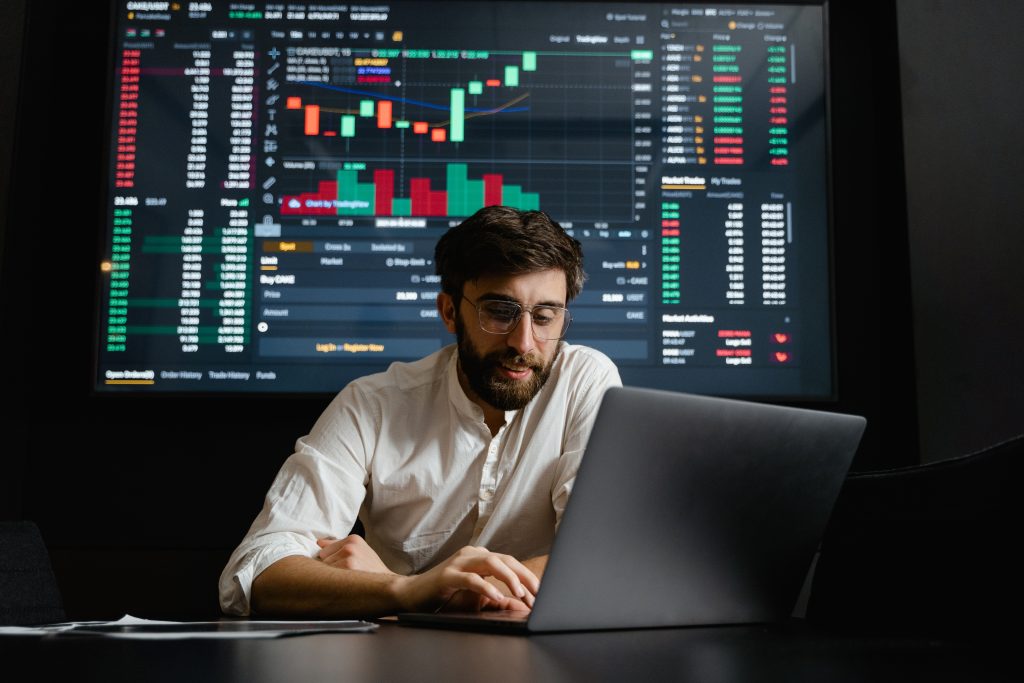Analyzing The Impact Of Cryptocurrency News On Market Trends
9 min read
Cryptocurrency has become a hot topic in recent years, with the market experiencing significant volatility. But what exactly causes these market trends and fluctuations? The answer lies in the impact of cryptocurrency news on market moves.
The world of cryptocurrency is constantly evolving, with new coins and technologies emerging regularly. As a result, the market is highly sensitive to news and events that can influence investor sentiment. Understanding the relationship between cryptocurrency news and market trends is crucial for investors looking to make informed decisions.
In this article, we will analyze the impact of cryptocurrency news on market trends. By examining real-world examples and discussing the key factors that drive market moves, we aim to provide readers with valuable insights into the dynamic nature of the cryptocurrency market. Whether you’re a seasoned investor or just starting out, understanding the role of news in shaping market trends is essential for maximizing profits and minimizing risks. So, let’s dive into the world of cryptocurrency news and its influence on market moves.
Factors Impacting the Cryptocurrency Market
The cryptocurrency market is a complex and dynamic environment that is influenced by a variety of factors. Understanding these factors is crucial for anyone looking to invest or participate in the market. From technological advancements to regulatory changes, the cryptocurrency market is constantly being impacted by a wide range of factors.

Price Volatility
Price volatility in the crypto markets is heavily influenced by macroeconomic indicators and market fear indices. Economic indicators such as inflation rates, interest rates, and GDP growth can directly impact the demand for cryptocurrencies, leading to fluctuations in their prices. In addition, market fear indices, such as the VIX, can also be a significant factor in driving volatility in the crypto markets as they reflect investor sentiment and risk aversion.
The relationship between traditional financial assets and crypto assets in terms of price volatility is complex. While traditional financial assets like stocks and bonds are influenced by macroeconomic indicators and market fear indices, crypto assets are often seen as a separate asset class with their own unique drivers of volatility.
With the increasing institutional investment in crypto assets, there is a potential for contagion risk between traditional and crypto assets. As more institutions allocate funds to cryptocurrencies, any significant price movements in the crypto markets could spill over into traditional financial markets, leading to increased volatility and interconnectedness between the two asset classes.
Political and Regulatory Uncertainty
Political and regulatory uncertainty can have a significant impact on the cryptocurrency market. News events related to government regulations and political developments can lead to fluctuations in the prices of cryptocurrencies other than bitcoin, transaction volumes, the number of addresses, and the profitability of mining cryptocurrencies.
Regulatory news can trigger a wider crypto-ecosystem response, causing significant market volatility. For example, when China announced a ban on initial coin offerings and cryptocurrency exchanges in 2017, it led to a sharp drop in the prices of various cryptocurrencies and a decrease in trading volumes. On the other hand, positive regulatory developments, such as the approval of a bitcoin ETF or the recognition of cryptocurrencies as a legitimate asset class in other countries, can lead to a surge in prices and increased investor confidence.
Overall, political and regulatory uncertainty plays a crucial role in shaping the behavior of the cryptocurrency market and can greatly influence the investment decisions of market participants.
Investor Sentiments
Investor sentiment has a significant impact on market prices, especially in the context of cryptocurrencies like Bitcoin. Positive or negative investor sentiments can drive prices up or down, even in the absence of fundamental changes in the underlying asset. When investors are optimistic about the future prospects of a cryptocurrency, they are more likely to buy and hold onto it, driving up the demand and therefore the price. Conversely, if they are pessimistic, they may sell off their holdings, leading to a decrease in price.
Investor expectations also play a crucial role in price movements. If investors anticipate a positive development, such as a regulatory approval or a technological advancement, they may buy more, causing the price to increase. On the other hand, if they expect negative news, such as a security breach or a government crackdown, they may sell, leading to a price drop.
Institutional Investors
Institutional investors are having a significant impact on the correlation between cryptocurrency and the stock market. These investors, including hedge funds, pension funds, and other large financial institutions, are increasingly getting involved in the cryptocurrency market. This has resulted in a closer correlation between the value of cryptocurrencies and traditional stock market movements.
Institutional investors are approaching cryptocurrency with cautious optimism. While many are still hesitant to fully embrace the volatile and often opaque nature of digital assets, some are beginning to allocate a small portion of their portfolios to cryptocurrencies as a hedge against traditional market risks.
The entry of institutional investors into the cryptocurrency market is having a substantial impact. It is leading to increased liquidity and market stability. It is also influencing the trading behavior of retail investors and affecting the overall market sentiment. As institutional investment trends continue to evolve, the correlation between cryptocurrency and the stock market is expected to become even more pronounced.
International Review of Financial Analysis
The International Review of Financial Analysis recently explored the changes in the crypto network structure during times of crisis and their impact on investors’ investment decisions. The study utilized metrics such as Degree Assortativity Coefficient, Average Betweenness Centrality, v-measure, Degree centrality, and the Eigenvalue method to compare the topological changes between two networks. These metrics provided insights into how the structure of the crypto network evolves and adapts during times of crisis, which in turn affects the decisions made by investors.
The significance of these changes in relation to stock market news and analysis is substantial. Understanding how the crypto network structure changes during times of crisis can provide valuable insights into the overall market sentiment and the behavior of investors. This knowledge can then be used by investors to make more informed decisions regarding their investments in the crypto market. Overall, the study sheds light on the intricate relationship between the crypto network structure, times of crisis, and investors’ investment decisions, providing valuable information for both academics and practitioners in the field of financial analysis.
Analyzing the Impact of News On Market Trends
Analyzing the impact of news on market trends is crucial for investors and traders to make informed decisions. News, whether it’s related to political events, economic data, or corporate announcements, can significantly influence the behavior of the financial markets. By understanding how news affects market trends, individuals can better anticipate price movements and identify potential opportunities for profit.

Types of Cryptocurrencies
There are several types of cryptocurrencies based on their purpose, original code, regulation, and mining method.
1. Targeted cryptocurrencies are specific to a particular use case such as privacy-focused cryptocurrencies like Monero and Zcash. Non-targeted cryptocurrencies like Bitcoin and Ethereum are designed for broader use.
2. Original digital currencies refer to cryptocurrencies with their own unique codebase, such as Bitcoin and Litecoin. Forks are cryptocurrencies that modify the original codebase, like Bitcoin Cash and Ethereum Classic.
3. Regulation varies, with some cryptocurrencies being heavily regulated by governments while others, like decentralized cryptocurrencies, aim to operate independently of traditional regulatory systems.
4. Mining methods include independent mining, where individuals mine cryptocurrencies on their own, mining pools, which involve multiple miners combining their resources, and cloud mining, where individuals can rent mining equipment remotely.
Overall, cryptocurrencies can be categorized based on their purpose, original code, regulation, and mining method, with various options for both targeted and non-targeted, original and forked, regulated and independent, and different mining approaches.
Relationship Between Asset Class and Prices
The relationship between asset classes and prices is a complex and dynamic one, as evidenced by historical data and market trends. Different asset classes, such as stocks, bonds, real estate, and commodities, can have a significant impact on overall prices in the economy. For example, when stock prices increase, it can lead to greater consumer confidence and spending, which in turn can drive up prices for a variety of goods and services. On the other hand, if bond yields rise, it can lead to higher borrowing costs for businesses and individuals, potentially leading to lower consumer spending and decreased demand, thus potentially dampening prices.
One specific example of how changes in asset class values have directly influenced price fluctuations in the past is the housing market crash of 2008. As real estate prices plummeted due to a housing bubble burst, it led to a widespread economic downturn, impacting prices across multiple sectors. Additionally, fluctuations in commodity prices, such as oil or agricultural products, can have a ripple effect on prices for various consumer goods, as they impact production and transportation costs.
Overall, the relationship between asset classes and prices is a vital aspect of understanding the dynamics of the economy, with each asset class playing its role in shaping overall price levels.
Inverse Relationship between Stock Prices and Crypto Markets
The possible inverse relationship between stock prices and the crypto markets can be attributed to several factors. Historically, when stock prices experience a downturn, investors may seek alternative investments, such as cryptocurrencies, leading to an increase in demand and subsequently driving up the prices in the crypto markets. Similarly, during periods of high stock market performance, some investors may shift their focus away from cryptocurrencies, causing a decrease in demand and a decline in prices.
Market sentiment plays a significant role in the correlation between stock prices and crypto markets. Positive or negative perceptions about the economy, geopolitical events, or the overall investment landscape can influence the direction of both markets. Economic circumstances, such as interest rate changes, inflation, or unemployment rates, can also impact investor behavior and subsequently affect both stock and crypto markets.
Regulatory actions and government policies, especially regarding cryptocurrencies, can have a noteworthy impact on the relationship between stock prices and crypto markets. Increased regulatory scrutiny or bans on crypto trading can lead to a negative impact on crypto prices, while supportive regulations can lead to positive movements.
Negative Relationship between Central Banks and Virtual Currencies
The negative relationship between central banks and virtual currencies stems from the potential threat that cryptocurrencies pose to the central bank’s control over monetary policy and financial stability. The emergence of central bank digital currencies (CBDCs) presents a direct competition to existing cryptocurrencies, as they offer a government-backed alternative that could undermine the decentralization and privacy features of virtual currencies.
Moreover, the implementation of quantitative easing by central banks can impact the cryptocurrency market by affecting investor sentiment and overall market performance. When central banks engage in quantitative easing, it can lead to increased inflation and devaluation of traditional currencies, prompting some investors to seek alternative assets such as cryptocurrencies. Conversely, tightening measures by central banks, such as interest rate hikes, can dampen investor sentiment in the cryptocurrency market as it becomes less attractive compared to traditional investments.
Bank Digital Assets vs Crypto Assets
Bank digital assets are digital representations of fiat currency issued by central banks or commercial banks. They operate on centralized systems and are typically regulated by financial authorities. These assets use traditional banking technology and are subject to standard banking regulations. They are primarily used for interbank settlements, cross-border payments, and central bank digital currencies.
On the other hand, crypto assets are decentralized digital currencies that operate on blockchain technology. They are not issued by a central authority and are regulated by various frameworks that vary by jurisdiction. Crypto assets have diverse use cases, including peer-to-peer transactions, smart contracts, and decentralized finance.
In terms of accounting, bank digital assets are treated similarly to traditional currency and are recorded on balance sheets. Crypto assets, on the other hand, are recognized as intangible assets or investments and are subject to fair value accounting.
Current market examples of bank digital assets include JPM Coin by JPMorgan Chase, while crypto assets such as Bitcoin and Ethereum are widely used for investment and as a means of exchange.

Conclusion
In conclusion, the impact of cryptocurrency news on market trends has been quite clear. There is evidence that positive news about the industry can lead to a surge in prices, while negative news can lead to a decline in prices. Additionally, investors and traders should be aware of how their trades may be impacted by news events. By monitoring the latest headlines and understanding how different types of news can affect the markets, investors and traders can make informed decisions that could help them maximize their profits in the cryptocurrency markets.






